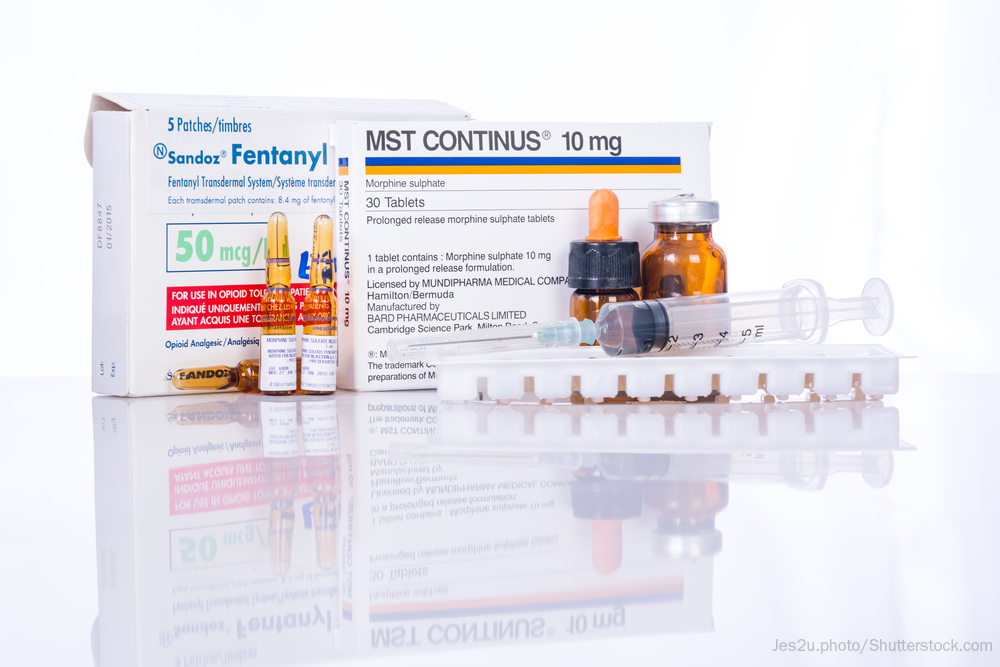- Safety & Recalls
- Regulatory Updates
- Drug Coverage
- COPD
- Cardiovascular
- Obstetrics-Gynecology & Women's Health
- Ophthalmology
- Clinical Pharmacology
- Pediatrics
- Urology
- Pharmacy
- Idiopathic Pulmonary Fibrosis
- Diabetes and Endocrinology
- Allergy, Immunology, and ENT
- Musculoskeletal/Rheumatology
- Respiratory
- Psychiatry and Behavioral Health
- Dermatology
- Oncology
Electronic prescriptions for opioids rise, despite CDC concerns about misprescribing
CDC commentary claims patients taken off opiods too soon.

Uhrig

A new CDC perspective piece said that physicians may be cutting off opioid painkillers too soon for patients who need them.
The authors of the “CDC Guideline for Prescribing Opioids for Chronic Pain” said in a New England Journal of Medicinecommentary that misapplication of opioid guidelines can risk patient health and safety.
Although the CDC “commends efforts by healthcare providers and systems, quality improvement organizations, payers, and states to improve opioid prescribing and reduce opioid misuse and overdose,” some policies and practices are not consistent with the recommendations, CDC said in a statement.
Related: Startling number of patients inappropriately prescribed fentanyl
The Guideline is intended for primary care clinicians treating chronic pain in adults, but physicians have been limiting or cutting off opioid scripts for patients in active cancer treatment, patients experiencing acute sickle cell crises, or patients experiencing post-surgical pain, CDC says.
“The Guideline does not support abrupt tapering or sudden discontinuation of opioids. These practices can result in severe opioid withdrawal symptoms including pain and psychological distress, and some patients might seek other sources of opioids,” CDC says. “In addition, policies that mandate hard limits conflict with the Guideline’s emphasis on individualized assessment of the benefits and risks of opioids given the specific circumstances and unique needs of each patient.”
However, Surescripts revealed in its 2018 National Progress Report that the number of electronic prescriptions for opioids and other controlled substances soared 49% in 2018. “This is good news because Electronic Prescribing for Controlled Substances (EPCS) helps care providers prescribe with confidence, ensuring that patients get pain relief, while curbing potential fraud and abuse,” Paul Uhrig, chief administrative, legal and privacy officer for Surescripts, told FormularyWatch.
Related: Generic naloxone nasal spray gets green light from FDA
Technology can be used to address 2 key challenges of the opioid epidemic: drug diversion-including illegal prescription opioid use-and clinical appropriateness, including effective uses of opioids for patients with legitimate needs, Uhrig said.
EPCS eliminates paper prescriptions, which can be stolen, forged or altered. Plus, prescribers have electronic access to a patient’s prescription history to help identify potential overuse or abuse.
“These tools offer a number of benefits, including enhanced security, privacy, and prescribing flexibility, as well as improved work flow efficiency for prescribers and pharmacists alike. The electronic nature of the prescription helps increase patient safety and medication adherence while impeding the fraud and abuse that more easily occurs with paper counterparts,” Uhrig said.
Surescripts also found a nearly 90% increase in e-prescriptions of buprenorphine, used to help treat opioid dependence and addiction.
Read more: Amid opioid epidemic, FDA clears powerful painkiller
FDA Issues Complete Response Letter for Pz-Cel to Treat Epidermolysis Bullosa
April 22nd 2024Prademagene zamikeracel is a cell therapy designed to incorporate the functional collagen-producing COL7A1 gene into a patient’s own skin cells. The FDA is asking for additional information on manufacturing practices.
